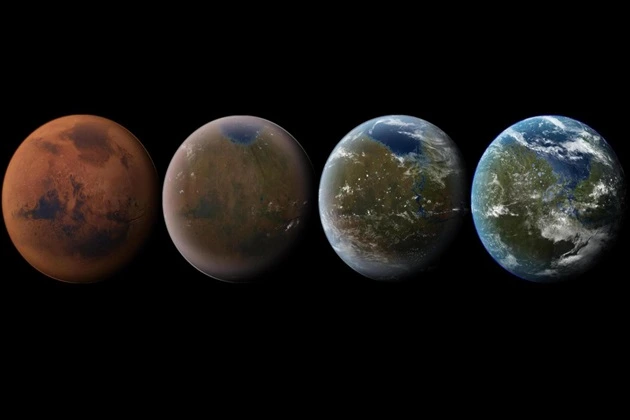Technologies and scientific breakthroughs, which are always several decades away

Technological progress is impossible to ignore. Just 20-25 years ago, cell phones were more of a luxury than a means of communication. Mobile Internet was out of the question. There were also many services like electric scooters for rent or the usual food delivery. However, thanks to science fiction, several possible inventions are still decades away from being implemented. These ideas and concepts appeared at the beginning of the 20th century and sometimes even earlier. Nevertheless, significant progress has yet to be made in these areas.
Clean Energy

The idea of switching to renewable or inexhaustible energy sources within humanity originated at the end of the XIX century. The prototype of an electric car appeared in 1899, and the first hydroelectric power plant appeared in 1895. Back then, not all cities had street lighting. They returned to the issue more comprehensively after the Second World War.
The scientific community has increasingly begun to refer to global warming and the need to take rapid measures to reduce harmful emissions. In the 70s, optimistic forecasts about the imminent transition to clean energy were made. Futuristic concepts of new-generation electric vehicles appeared in magazines. Wind turbines began to appear in some European countries. The main bet was on the development of solar panels.
It should be noted that all of the above works, but it is not even close to meeting mankind’s energy consumption. Today, the share of coal and natural gas in global electricity production is 60%. The most promising source remains nuclear energy, which does not correspond to cleanliness and safety.
Colonization of the Moon or Mars

On April 12, 1961, Yuri Gagarin became the first man in space. It seems unthinkable, but just eight years later, on July 21, 1969, Neil Armstrong set foot on the Moon’s surface. The incredible speed of technological development left no doubt that humanity would become an interplanetary species in the foreseeable future. First, there was the colonization of the Moon and then Mars. These sentiments are reflected in the popular culture of those years.
Hundreds of science fiction films and novels about space have appeared. One of the first computer games in history was Spacewar. Humanity has conquered the oceans and sky and rushed to the stars. The first detailed design of a permanent lunar base was developed in the USSR and was ready by the early 1970s.
The United States also sought a foothold on the Earth’s only satellite. Several projects are known, including Horizon and Lunex. Visit. A F R I N I K . C O M . For the full article .Only a few years remained before the start of colonization. No one doubted that people would be constantly present on the Moon by the beginning of the next millennium. The deadlines were constantly shifting; today, we are in the same position when the colonization of Mars is planned for 2045-50, that is, all the same, twenty years.
Artificial Intelligence

The concept of an artificial entity capable of thinking appeared in the Middle Ages. Back then, it was about all kinds of golems or animated dead. A strictly scientific understanding of AI arose in the second half of the 20th century with the invention of the first computers. The engineers were confident in the rapid development of the technology. Computing power grew, and at the same time, computers became more compact. Putting a powerful processor in a humanoid shell was a small matter. Now, many people use Midjourney or ChatGPT; it may seem that the future has come.
Teleportation
However, this is just generative software. Neural networks have made a technological breakthrough, but they remain completely dependent on the will and, most importantly, the operator’s intelligence. It is enough to compare your drawing results with more professional works. The same tool is used, but how different is the final product? You must be guessing that very little time is left before creating general-purpose artificial intelligence. Some 10-20 years.

The idea of instantaneous movement of living organisms and objects over long distances is integral to the science fiction genre. Ideas about the process have changed greatly throughout the XX and XXI centuries. At first, the concept of teleports, which work like elevators, dominated. You walk through one door and are immediately transported to the other side of the Earth or another star system.
Scientists have always been skeptical about this approach. Firstly, such technology violates the fundamental laws of physics. Secondly, portals need to be built first. If this is not a problem within the Earth, then there are obvious difficulties with transferring to other planets. Today, the idea of copying the original object is more popular. That is, the teleporter does not transfer matter but transmits complete information about it up to the exact location of each atom.
After that, the source material is recreated at the other end of the “wire.” Recent discoveries in the field of quantum mechanics show that this is possible. The spin (momentum) of an elementary particle “A” can be transferred to such a particle “B” located at a distance. This is a significant breakthrough. It turns out that there is a theoretical way to transmit information faster than the speed of light. However, it remains a pretty long way to practice on material subjects for at least several decades.
Cryonics

Thanks to science fiction, everyone knows what a cryogenic capsule is, although they have never seen one with their own eyes. The essence of the technology is simple—keeping the body frozen for many years or centuries with the possibility of bringing a person back to life. American writer James Bedford was colonized in 1967 and has been stored at the Alcor Life Extension Foundation ever since. To date, several thousand people are clients of cryofirms.
However, the service is perceived more as a scam, similar to purchasing land on the Moon or other celestial bodies. The fact is that companies start cryopreservation of the body only after legally recorded death; otherwise, freezing a still living person will be regarded as murder. There are no ways to revive a complex organism after putting it into artificial suspended animation.
Nevertheless, in 2016, 69 scientists signed an open letter in support of cryonics. Leading experts do not doubt the technology’s prospects. Successful experiments with microorganisms allow us to hope for a breakthrough in this field. Naturally, several decades remain before the first people are defrosted. However, it may also be that the cryopreservation process was carried out incorrectly.




